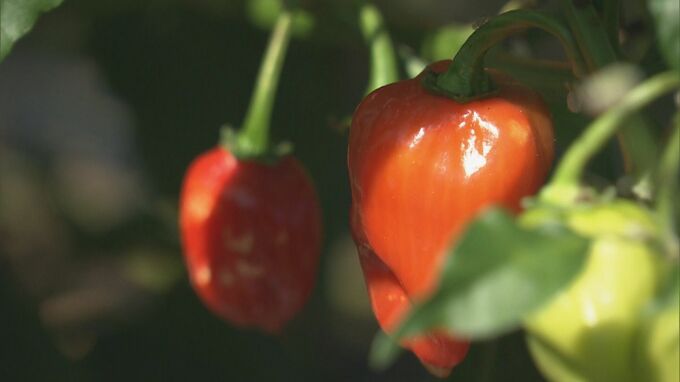The harvest of “Habanero” peppers, known for their extreme spiciness, is at its peak in Kumano City, Mie Prefecture.
“Habanero” peppers are native to Central and South America and are known as one of the world’s spiciest chili peppers. The Kumano Agricultural Promotion Corporation in Kumano City, Mie Prefecture, has been cultivating “Habanero” peppers for about eight years, and the harvest is currently in full swing.
In the fields on the premises, workers carefully pick each bright red “Habanero” pepper one by one. The peppers are highly resistant to heat, and this year’s crop is excellent.
The harvest of Habanero peppers will continue until November. They will be processed into powder form and shipped to cities such as Tokyo and Osaka.
Kumano City
Kumano City is a coastal municipality in Mie Prefecture, Japan, historically known as a center for the production of Kumano brushes, a traditional craft with a history spanning over 180 years. The city is also part of the larger Kumano region, which is famous for its ancient pilgrimage routes and sacred sites that have been revered in Shintoism and Buddhism for over a thousand years.
Mie Prefecture
Mie Prefecture is a region in central Japan historically known as the home of the Ise Grand Shrine, one of Shinto’s most sacred sites. It has been a center of pilgrimage for centuries and is also famous for its traditional pearl cultivation industry in Ago Bay.
Central America
Central America is a culturally rich isthmus connecting North and South America, historically home to advanced indigenous civilizations like the Maya. Following Spanish colonization in the 16th century, the region gained independence in the early 19th century and is now comprised of seven sovereign nations. It is renowned for its volcanic landscapes, ancient ruins, and vibrant, diverse traditions.
South America
South America is a continent with a rich and diverse cultural history, shaped by ancient civilizations like the Inca, colonial rule by Spain and Portugal, and waves of immigration. It is home to globally significant sites, including the Amazon rainforest, the Andes mountains, and ancient ruins such as Machu Picchu. This blend of indigenous heritage and colonial influence has created a vibrant mosaic of languages, traditions, and cuisines.
Kumano Agricultural Promotion Corporation
The Kumano Agricultural Promotion Corporation is a modern Japanese organization focused on supporting local farming and regional development in the Kumano area. It does not have a long historical legacy but operates to promote the area’s renowned agricultural products, such as citrus fruits and timber, which are deeply tied to the region’s traditional practices.
Tokyo
Tokyo is the modern capital of Japan, but its history dates back to the 15th century when it was a small castle town named Edo. It was officially renamed Tokyo, meaning “Eastern Capital,” in 1868 when the emperor moved his residence from Kyoto, marking the beginning of the Meiji Restoration. Today, it is a global metropolis known for its towering skyscrapers, historic temples, and vibrant pop culture.
Osaka
Osaka is a major port city and commercial hub in western Japan, historically known as the country’s “kitchen” for its crucial role in the rice trade during the Edo period. Its most famous landmark, Osaka Castle, was originally built in the late 16th century by the unifying warlord Toyonari Hideyoshi. Today, the city is celebrated for its modern architecture, vibrant street food culture, and outgoing locals.






